https://www.theguardian.com/science/2018/dec/23/the-science-stories-that-shook-2018-genetics-evolution-climate-change-artificial-intelligence?fbclid=IwAR0Oof6-1UqGoS20uPMlNK2kz-1uph341PFPHqwQcxrNl8Kii99xz8y4Y-Q
The science stories that shook 2018
Our guest scientists pick the breakthroughs and discoveries that defined their year, from insights into human evolution to our first trip aboard an asteroid
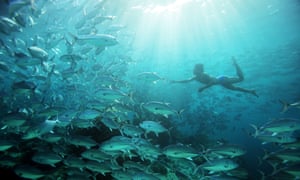
‘Sea nomads’ helped us learn secrets of natural selection
Take a deep breath. Dive into the emerald water. It’s 13 minutes and 70 metres down to lunch. Are you dead yet? Not if you are one of the Bajau “seanomads” of south-east Asia, who have been free-diving like this for more than 1,000 years, relying on their remarkable physiology, and, as we learnedin April, their genes. Humans left Africa 50 millennia ago, encountering new environments that required adaptation to survive. Adaptation is mostly cultural – building shelters, using fire, deciding what to eat, and transmitting instructions from generation to generation. But alongside this are advantageous genetic mutations grasped by natural selection.
Finding genetic changes that drive adaptations has become much easier now genomes can be sequenced cheaply, and a study this year of the Bajau people provided a beautiful example. Ultrasound scans revealed enlarged spleens – reflex contraction of this neglected organ helps during diving by pumping oxygenated red blood cells into the circulation. Sequencing Bajau genomes and comparing them with those of their non-diving neighbours revealed genes showing signatures of natural selection, one of which is specifically associated with spleen size. Understanding the dive response could have medical applications in acute hypoxia, a common killer in A&E.
Mark Jobling, professor of genetics, University of Leicester
Mark Jobling, professor of genetics, University of Leicester
The world took action to combat plastic at last
Among the tsunami of bad news about plastic waste this year, there was a small piece of good news. This was an agreement in April by those responsible for more than 80% of the plastic packaging in the UK to make all plastic packing 100% recyclable, reusable or compostable by 2025. This pledge, called the UK Plastics Pact, is significant because it has emerged not from government but from a consortium of companies and organisations including supermarkets, coffee chains, brands, manufacturers, waste disposal companies and local authorities. Thee organisationsy have clubbed together to solve this problem largely because they are under massive public pressure. They propose to create a circular economy of plastics, a seismic shift in the way companies engineer and use them. It is a big win for the environment of the UK, but it will also have a global impact, because many of the companies involved – such as Coca-Cola, Unilever and Procter & Gamble – are multinational corporations that sell products all over the world. Once the UK creates a non-polluting circular economy of plastic packaging, the likelihood of it being rolled out by these companies in the rest of the world is high. There is an enormous amount of work to do, but I hope when our children look back at the environmental catastrophe of the 20th century, they will see 2018 as the year plastic pollution started its decline.
Mark Miodownik, professor of materials and society at University College London
Mark Miodownik, professor of materials and society at University College London
Remote high seas found new defenders
Most people don’t think much about the high seas. Far beyond the horizon, they begin where national control ends, 200 nautical miles from the coast, and cover 61% of the ocean and 43% of the Earth’s surface. Few laws restrain fishing here; countries can opt out of those that exist, and much activity is in any case hidden by remoteness. But 2018 may signal the beginning of the end of freedom to plunder fish and slaughter wildlife caught alongside them. This year Global Fishing Watch lifted the veil on the high seas, exposing fishing vessels and companies to scrutiny for the first time. Their tool tracks ship movements based on satellite transmissions from vessels, and uses machine learning to determine what a vessel is doing from its behaviour. We learned this year that high seas fishing contributes only 4.2% of wild fish catches, that 64% of the spoils go to just five rich countries, and that much of this fishing would not be profitable without public subsidies. In September, the UN began negotiations for a new treaty to protect high seas wildlife, paving the way for marine protected areas that Global Fishing Watch can help to police.
Callum Roberts, professor of marine conservation at the University of York
Callum Roberts, professor of marine conservation at the University of York
Climate change action became even more urgent
While it is always nice to round off the year with good-news science stories, I feel that the publication of the new UN IPCC (the Intergovernmental Panel on Climate Change) report in October was so important and with such huge ramifications that all else pales into insignificance.
The report shook the world when it was published on 8 October, suggesting that the time for talking was over and that the window available for us to really act against the worst effects of climate change was closing fast. It stated that “limiting global warming to 1.5C would require rapid, far-reaching and unprecedented changes in all aspects of society”.
Written by 91 scientists and review editors from 40 countries, with over 6,000 scientific references and contributions from thousands of experts worldwide, it explained that we are already seeing the consequences of 1C of global warming: more extreme weather, rising sea levels and diminishing Arctic sea ice. It also highlighted how much worse things could get if we do not act immediately.
The report examined what it would take to avert disaster and what the consequences could be. But the omens are not good. Global CO2 emissions are on the rise again, as is the popularity of climate change-denying, populist world leaders, which makes everything more difficult.
Jim Al-Khalili, professor of theoretical physics at the University of Surrey
Jim Al-Khalili, professor of theoretical physics at the University of Surrey
Humanity’s story got even more complicated
Europe’s hegemony on humankind’s story loosened when the record for the oldest known figurative cave art by Homo sapiens shifted from Germany to south-east Asia. The painting of a local wild cow, a banteng, in a remote cave in Borneo was dated in November as being a minimum of 40,000 years old, just nudging ahead of the Lion Man carving of Hohlenstein Stadel in Germany. In September, a flake of stone with hashed patterns made with an ochre crayon from the Blombos Cave in South Africa was dated at 73,000 years old, though these markings fall short of being identifiable as art. All these artefacts show the emergence of minds like our own, so-called behavioural modernity, all around the world. But it wasn’t limited to Homo sapiens. An abstract image of parts of a cow and some other mysterious figures adorns a cave wall on the Spanish Cantabrian coast, and in February was found to be a whopping 65,000 years old, though this date has been contested. The only people in northern Spain at that time were Homo neanderthalensis, and the continued rehabilitation of our cousins continues: Neanderthals were simply people too.
Dr Adam Rutherford, presenter of Inside Science, Radio 4
Dr Adam Rutherford, presenter of Inside Science, Radio 4
Impact of livestock on the ecosystem was weighed up
When my son was younger, he had a duvet cover with animals from around the world. He slept wrapped in colourful images of tigers, elephants, and kangaroos. However, if this duvet represented mammals in terms of their weight, all the world’s wild mammals would cover only a corner of the pillowcase. This shocking fact was the main message I took from a detailed analysis of the biomass of life on Earth published earlier this year. People and our livestock (mostly cattle and pigs) now make up 96% of mammalian biomass on the planet. Similarly, the weight of domestic poultry (mostly chickens) is three times higher than all species of wild birds combined.
These stark statistics help us understand the extent to which we humans now dominate ecosystems. While wildlife documentaries still wow us with images of wonderful wildlife in wild places, these places are shrinking. Almost everywhere, the large mammal you are most likely to encounter is a human or a cow. I hope that being reminded of this will help society take actions to ensure that my son’s children don’t live in a world where wild species are only known from images on soft furnishings.
Julia Jones, professor of conservation science, Bangor University
Julia Jones, professor of conservation science, Bangor University
Gene editing began the bid to breed a better banana
Gene-editing is a breakthrough in biotechnology, not least in crop improvement. Scientists’ favourite method, Crispr/Cas9, makes precise changes to individual genes, even changing a single “letter” of the genetic code. It’s quick, easy and amazingly versatile. A headline story in 2018 was the European court of justice’s ruling that gene-edited crops must be subject to the same cumbersome regulation as older methods of genetic engineering, even though Crispr mutations are no different to those found throughout the natural world. Plant breeders are pressing for this decision to be overturned so farmers and consumers can benefit from improvements in fruit, vegetables and field crops.
Meanwhile, they are seizing the opportunities offered by Crispr to transform food production. In 2018, teams of scientists in India and Australia announced that they had successfully edited the genome of bananas. This could rescue the world’s most popular fruit from the threat of disease. Banana improvement faces two great challenges. One is monoculture: the Cavendish is the supermarkets’ favourite banana, but plantations worldwide are susceptible to the destructive tropical race 4 strain of the Fusariumfungus. In other crops, cross-breeding could produce disease-resistant varieties, but the second challenge is that banana flowers are sterile. Gene-editing offers the exciting prospect that scientists will at last be able to make a disease-resistant banana.
James Brown, head of crop genetics at the John Innes Centre, Norwich
James Brown, head of crop genetics at the John Innes Centre, Norwich
Breakthrough in study of the causes of miscarriage
Any woman who has suffered a miscarriage is likely to worry about what she has done “wrong”; a woman at the end of her pregnancy who is afflicted with the serious condition pre-eclampsia will wonder why it afflicted her in particular. Both situations, common as they are and with all their accompanying distress, are likely to arise from problems with the placenta. But it is difficult to determine this, since the human placenta is hardly available off the shelf for easy study.
A team of scientists at the University of Cambridge have made a breakthrough permitting them to create a 3D (that’s important in order to simulate reality) “organoid”, clusters of cells derived from the placentas of aborted foetuses. These have been shown to grow and produce proteins, sufficiently mimicking the real thing that a pregnancy test gives a positive result. This mini-placenta, only a millimetre or less across, offers the promise that the origin of the developmental abnormalities that lead to the embryo not correctly implanting in the womb can finally be understood. For many women, this insight could prove transformative. Clearly, there is a long way to go from creating the first mini-placentas to answering the fundamental questions, but this study appears to provide a critical step forward.
Athene Donald, professor of experimental physics at the University of Cambridge
Athene Donald, professor of experimental physics at the University of Cambridge
Giant leaps on to the surface of asteroids
As much as I love seeing otherworldly pictures beamed back from the surface of Mars, it was a different sort of space landing that grabbed my attention this year. In June, the Japan Aerospace Exploration Agency’s (Jaxa) Hayabusa2 probe rendezvoused with a near-Earth asteroid called Ryugu, some 280m km away. The first pictures beamed back revealed a strange and beautiful diamond-shaped rock ploughing its way through space. Fascinating in and of itself, but the real treat would come in September, when the probe landed two rovers on Ryugu’s surface. The picture above is one of the first ever transmitted from the surface of an asteroid, and I could stare at it for hours. It’s a reminder that while there’s still so much to learn about the universe, the baby steps we’re already taking reveal an awe-inspiring beauty in the most unexpected of places. Hayabusa2 will also be collecting rock samples that might shed light on the potential origins of water and organic compounds (and maybe even life) on Earth, but the journey will be a long and risky one – it’s not scheduled back until December 2020.
Dr Pete Etchells, reader in psychology and science communication at Bath Spa University
Dr Pete Etchells, reader in psychology and science communication at Bath Spa University
Fear of vaccines led to the return of old diseases
This year has seen some sobering science stories, not least the increase in cases, sometimes fatal, of preventable diseases such as measles due to vaccine hesitancy and the growing politicisation of the anti-vaccine agenda. My older brother suffered with measles as child and was dangerously ill. He used to describe his fever dreams as the most terrifying experiences of his life. As late as the 1960s, many people still witnessed the potentially catastrophic effects of measles, rubella and whooping cough and there was a huge demand for the development of vaccines to prevent them. The introduction of vaccines dramatically reduced the incidence of infections and fewer people experienced the impact of disease. Now we are seeing a resurgence in preventable diseases such as measles due to vaccine hesitancy. Although there is not one clearly defined anti-vaccine group, six themesemerge:
1. Control: the idea that we can take back control of our own bodies through alternative means.
2. Parenting style: philosophies that shun mainstream medicine, opting for “natural” remedies.
3. The past: previous bad healthcare experiences or a bad experience around vaccination shapes perceptions.
4. Risk: misunderstandings about the risks of vaccination versus the risks of disease.
5. Fear of chemicals: the fear that the vaccine will introduce toxic chemicals.
6. Distrust of government agencies and corporations.
By listening to people, it is possible to start to understand what may lie behind their hesitancy. The re-emergence of preventable diseases is a stark reminder of how mistrust, confusion and bad information can spread, and emphasises the importance of experts in the field talking with and listening to the public to enable meaningful dialogue, help reduce propaganda and effect change.
Sheena Cruickshank, professor in biomedical sciences and public engagement, University of Manchester
Sheena Cruickshank, professor in biomedical sciences and public engagement, University of Manchester
Artificial intelligence got even smarter
Artificial intelligence (AI) has continued to make great strides in 2018. Although the AI of Blade Runner and Ex Machina remains as distant as ever, the power of so-called “deep neural networks” and “reinforcement learning” to solve complex problems has developed rapidly. Two milestones stand out this year: AlphaZero and AlphaFold, both from the London-based AI firm DeepMind. AlphaZero is the latest iteration of AlphaGo, which catapulted DeepMind to public prominence in 2016 when it beat Go champion Lee Sedol in a series of high-profile matches.
AlphaGo worked by training a deep neural network to predict the value of board positions, using millions of past games as training data. This was later improved upon by AlphaGo Zero, which learned purely by playing itself, and now AlphaZero takes things further by training a single network, again entirely through self-play and without any game-specific knowledge, to deliver world-beating performances in three different games: Go, chess, and the Japanese game shogi.
This remarkable achievement has also provided glimpses into new “machine-like” ways of thinking: as grandmaster Matthew Sadler put it, “it’s like discovering the secret notebooks of a great player from the past”. AlphaFold takes the same approach beyond the rarefied regime of board games to address a practical problem of real importance: predicting the 3D structure of proteins solely from genetic sequences. Here, the DeepMind software has again achieved world-leading results, bringing important implications for biology and medicine, and showcasing how AI can be used for scientific discovery itself.
Anil Seth, professor of cognitive and computational neuroscience, University of Sussex
Anil Seth, professor of cognitive and computational neuroscience, University of Sussex
A step closer to finding antimatter
Atoms emit and absorb light when electrons inside them jump around. This light comes at frequencies characteristic of the type of atom – sort of a unique barcode. Reading these barcodes tells us what elements are present in the stars, galaxies and the sparse gas between them.
One thing we don’t know though is why there is not more antimatter around. Antimatter is created in radioactive decays and particle collisions; it is routinely used in medical diagnosis. But equal amounts of antimatter and matter are always created or destroyed together. So if the matter around us was created in the Big Bang, there should presumably be an equal amount of antimatter. So where is it?
The ALPHA experiment at CERN this year collected and controlled anti-electrons and anti-protons to make and store enough anti-hydrogen to could start reading its barcode. They read one of the key identifiers used to track intergalactic hydrogen for the first time – the so-called “Lyman alpha” line. The line is in the same place as that for hydrogen, as predicted. This sets our knowledge of the universe on a slightly firmer footing, and, as the programme progresses, they will be on the look out for any subtle differences between matter and antimatter that may help explain where all the antimatter has gone.
Jonathan Butterworth, professor of physics, University College London
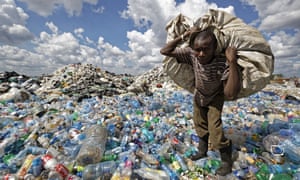
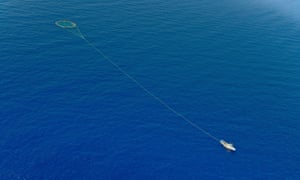
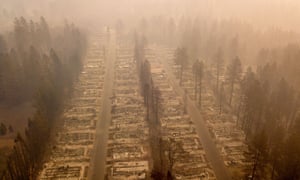
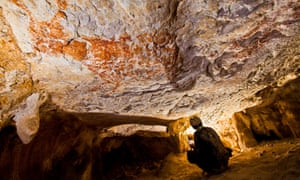

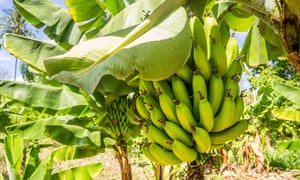
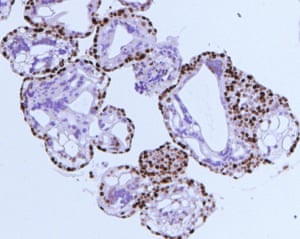


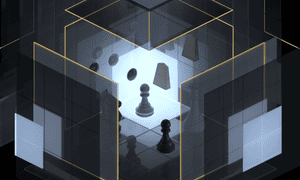
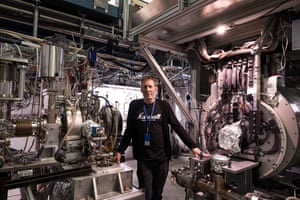
沒有留言:
張貼留言